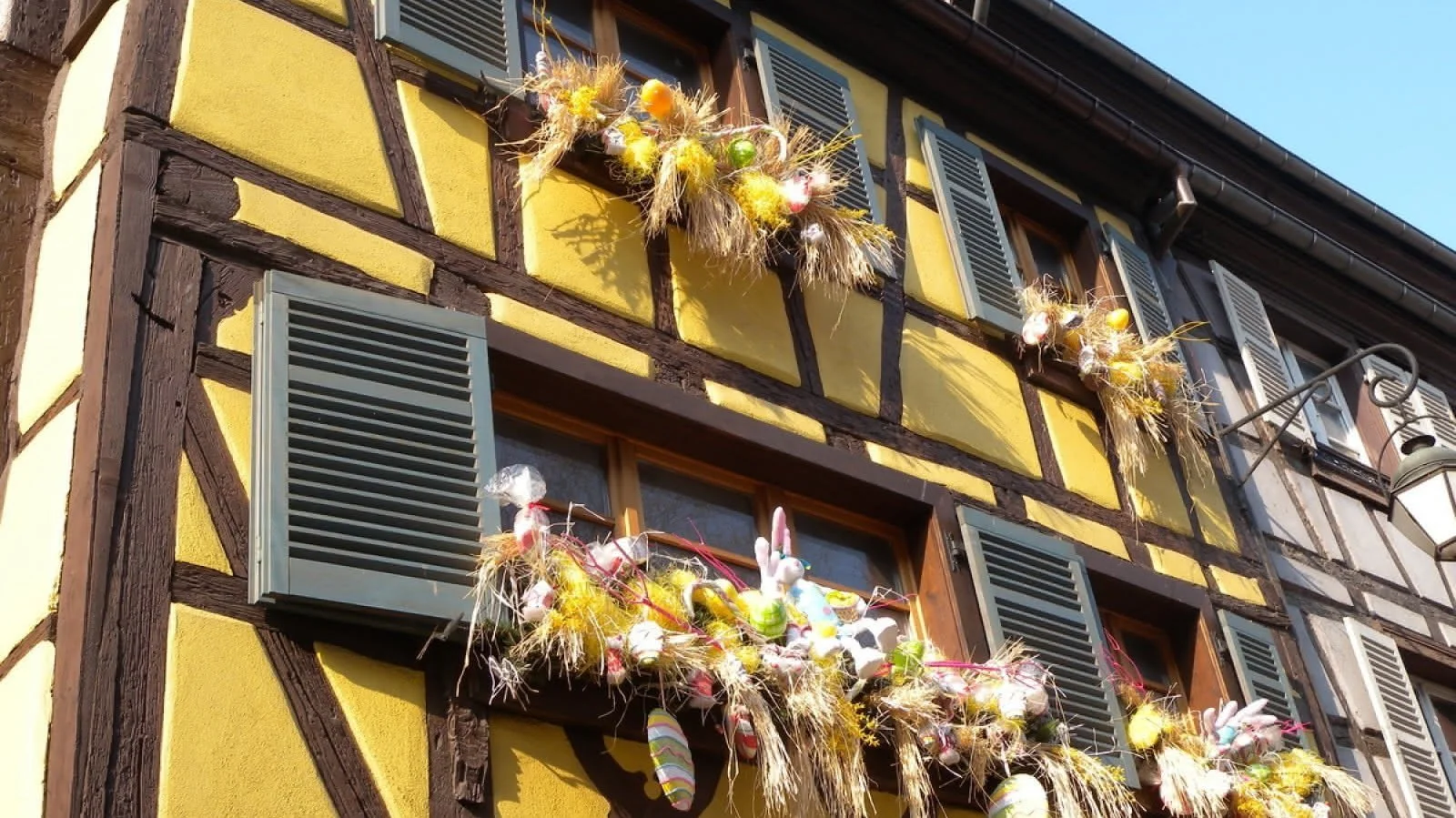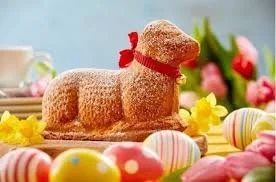ALSACE IN THE SPRING
In Alsace, spring arrives with a burst of vibrant hues, painting the landscape with a kaleidoscope of colors. Orchards and vineyards come to life as delicate blossoms adorn every branch, while fields carpeted with wildflowers create a patchwork of pink, purple, and yellow. The sight of cherry blossoms in bloom against the backdrop of ancient castles and half-timbered villages is a scene straight out of a fairytale. Easter is the Spring Festival par excellence, the music and noise made by Carnival succeeded in chasing away the cold spirit of the Winter. In Alsace, the season corresponds to the appearance of a mythical character: a fast-running mammal that resembles a large rabbit. It’s a Hare. The “easter Bunny” in the local dialect De Oschtahaas, indeed, is a hare, not a rabbit. According to the legend, only good children received gifts of colored eggs, which he carried in his baskets or the nests they made before Easter. Almost 20 centuries ago, in Europe, the Saxons held a fertility celebration in honor of the goddess Easter, whose sacred animal was a hare. The egg and the hare together represent the god and the goddess, respectively. Pagan fertility festivals at the time of the Spring equinox were common. It was believed that at this time, male and female energies were balanced.
The Christian church found it easier to absorb those Pagan practices. Some 15 centuries later, at the end of the Middle Ages, the Easter Hare was first mentioned in a book by Professor Georg Franck Von Frankenau in 1682 in his medical treatise. He refers to an Alsace and neighboring areas' tradition of an Easter Hare bringing Easter Eggs. Georg Franck ( From Saxe ) studied medicine and anatomy in Strasbourg, where he received his M.D. in 1666. The precise origin of the ancient custom of decorating eggs is not known. However, the blooming of many flowers in spring coincides with the use of the fertility symbol of eggs. German Protestants wanted to retain the Catholic custom of eating colored eggs for Easter but did not want to introduce their children to the Catholic rite of fasting. Eggs were forbidden to Catholics during the fast of Lent, which was why there was an abundance of eggs at Easter time.
The tradition of an egg-laying bunny then went to America in the 18th century. Alsatian and German immigrants in the Pennsylvania Dutch area told their children about the “Osterhase.” This tradition of the Easter Bunny remains in this 21st century very popular in Alsace. Florists, confectioners, and chocolate makers are offering bunnies and colored eggs. Another Alsacian Tradition at Easter is the “Lammele,” a typical Alsatian pastry for Easter. “Lammele” means “little Easter lamb” in Alsatian. The Lammele is a typical Alsatian tradition. Ancient Catholic theologian Thomas Murner from Obernai already stated in 1519: At Easter, the young man offered a Lammele to his fiancée. It was also offered to children at the return of the Mass on Easter Day. After Lent, this biscuit, rich in eggs whose consumption was forbidden during Lent, allowed to sell the accumulated stock before Easter. Like the famous Kougelof, the Lammele is traditionally cooked in a glazed clay mold. You’ll find the Lammele in all the Alsatian bakeries when Easter is approaching…
Easter in Alsace is also the time to spot giant nests on rooftops, roadside poles, and church towers in almost every village and town. Alsace is home to storks, which migrate yearly from Africa to Europe for the warmer months. The storks are faithful not only to their spouse but also to their dwelling, where they return every year. People in Alsace are friendly to storks. These birds have become somewhat of an oracle of the time of the year for farming activities, much like the groundhog in America. Stork abundance signifies a good year to come. Alsace has had a long association with its storks, known as störig in Alsatian, with a folktale dating back to 817. Louis the Pious, Emperor of the Carolingian Empire, wanted to divide his land among his three sons. Unfortunately, he was persuaded by his second wife to gift the full entitlement to her son only. This caused the other two sons to wage war against their father.
The peaceful storks saw the devastation and bloodshed that followed. Blood staining their beaks and feet as they surveyed the land, they decided to dip the tip of their wings in black and lose their voice in mourning. Storks have remained silent ever since. Mute from birth, storks communicate by body language and clapping their beaks.
In the 1970s, due to human expansion and loss of habitat, the stork population in Alsace hovered between extinction and survival. In 1983, a stork re-introduction program was begun. Today, the region of Alsace is home to more than 600 couples. Watching the storks relaxing in their nests, sleeping, preening, clapping their beaks – perhaps a couple in an argument over whose turn it was to look after the baby is a fairy tale moment, truly captivating.
Not only do the storks symbolize fertility, but the Alsatians consider them to be the bringers of luck and wealth. For the many winemakers of the region, they also bring a year of good harvest, meaning more wine for everyone.








